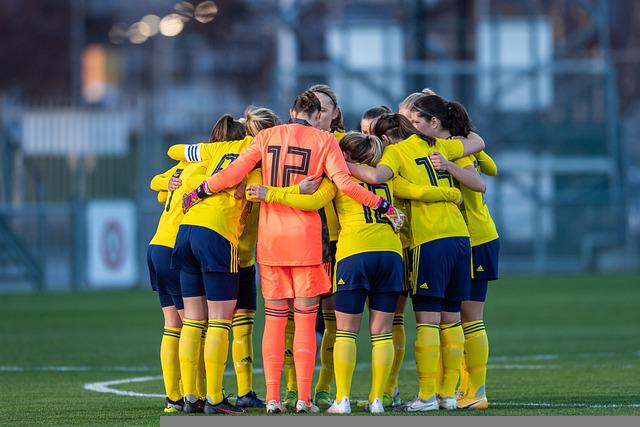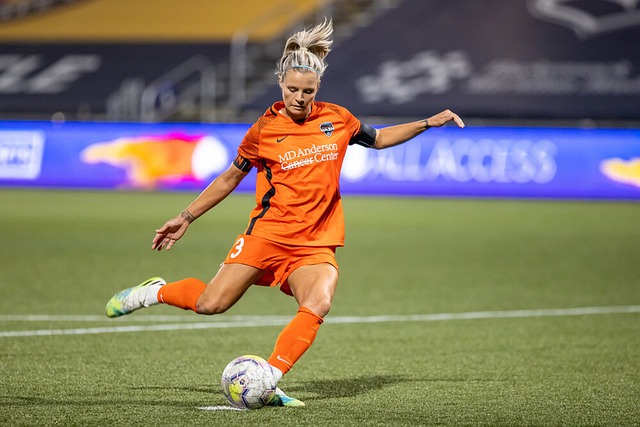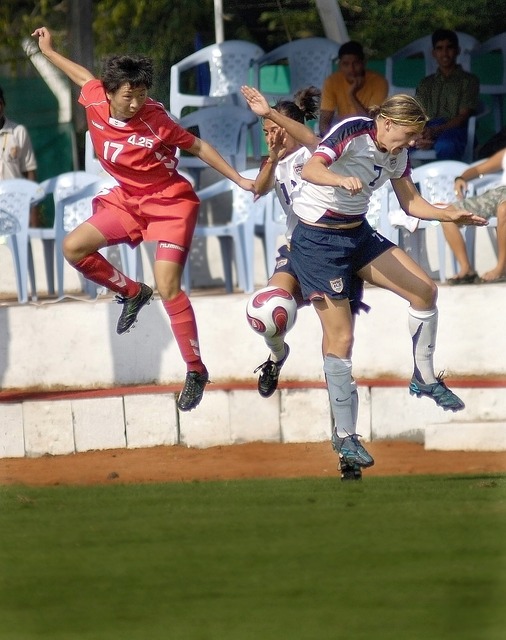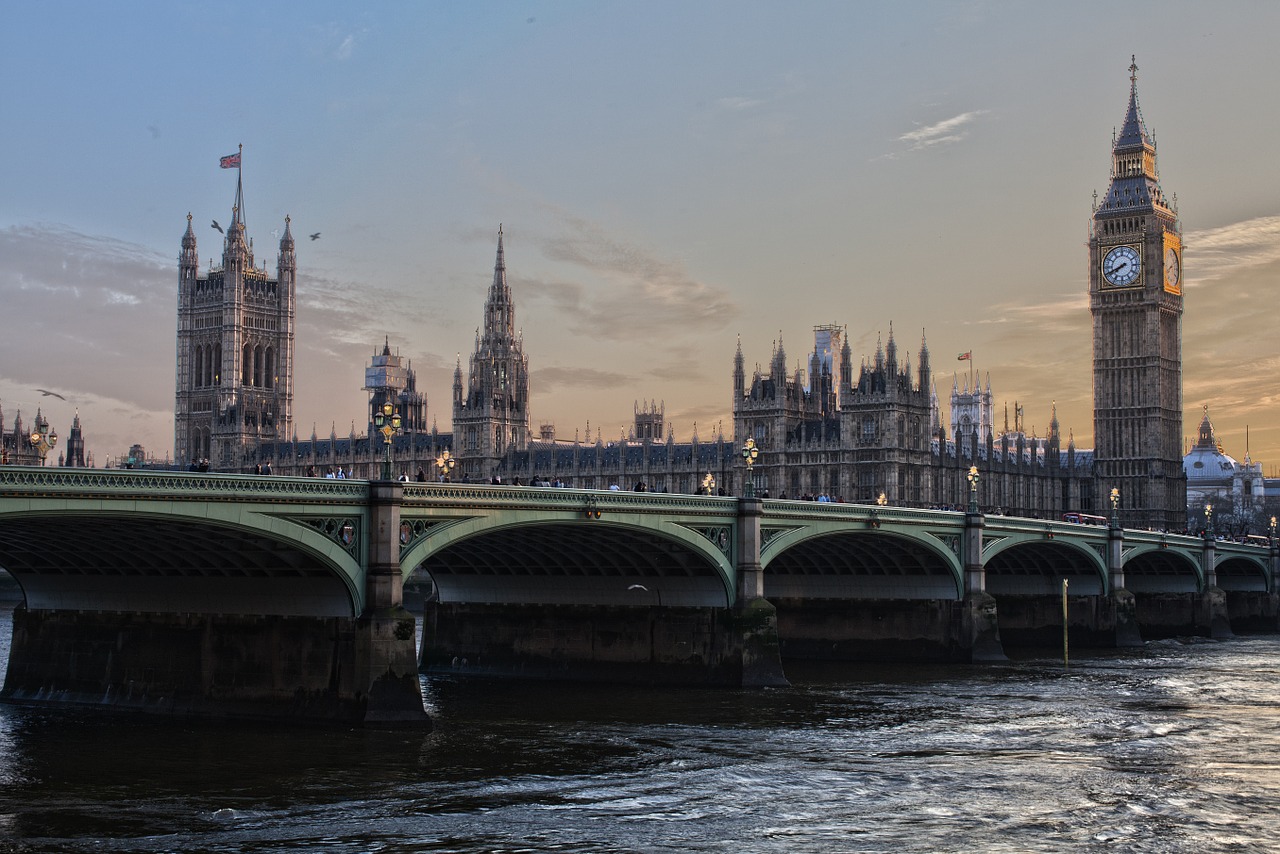Welcome to the latest in our series of How It Works… posts. The series where we take a look at how sporting events such as The Ashes, the Champions League and the French Open are organised.
In this eighth article, we are turning our attention to one of the fastest-growing sporting events in the world today. The FIFA Women’s World Cup.
While the Finals of this tournament draw plenty of interest, there is also an expansive qualifying stage to consider too.
In this look at the tournament, we will be taking a look at its history. Additionally, we’ll explain how teams qualify and compete in the tournament. We’ll detail some of the more popular betting markets you can bet on at sites like bet365 Sport.
Then we’ll finish with our list of great teams and individual players that have shone in the tournament over the years.
So let’s begin by heading back in time to the dawn of the biggest competition in women’s football.
What Is the History of The FIFA Women’s World Cup?
The first official FIFA Women’s World Cup took place in 1991. But its roots can be traced back to the start of the 1970s.
Back then, women’s football was very much a minority and tiny sport. Many countries banned women from playing the game. As such, eight teams were set to compete in the Martini and Rossi Cup in 1970.
However, Czechoslovakia withdrew on the even of the tournament, which meant that only seven teams would compete. England, West Germany, Denmark, Mexico, Austria, Italy and Switzerland.
West Germany actually played in two quarterfinals, but lost both to England and Denmark and it was the Danes that went on to win the tournament, defeating Italy 2-0 in the final, with Mexico beating England 3-2 in the third place match.
The tournament was judged to be a success and a year later, six teams travelled to Mexico to compete in what would become the 1971 Women’s World Cup. They were Mexico, Argentina, England, Denmark, Italy and France.
Once again Denmark reached the final and there they beat hosts Mexico 3-0 to win the trophy for the second time. Susanne Augustesen, aged just 15 years of age, scored a hat-trick in the final in front of a crowd of between 110,000 and 112,500.
Mundialito Era

Despite that, it was ten years before the next World Cup tournament took place. This time it was called the Mundialito and the first version was hosted in Japan in 1981, with subsequent tournaments in Italy in 1984, 1985, 1986 and 1988.
Italy won three of those tournaments (1981, 1984 and 1986), with England landing two wins in 1985 and 1988.
The 1985 tournament was notable for the first appearance in a major tournament of the United States women’s team.
By 1988, FIFA were interested in the prospect of having an ‘official’ Women’s World Cup sanctioned by the governing body. To investigate the possibility, they organised the 1988 FIFA Women’s Invitational tournament.
Held in China, 12 teams from six confederations were invited: Ivory Coast, China, Japan, Thailand, Brazil, Australia, Czechoslovakia, Netherlands, Norway, Sweden, Canada and the United States.
The tournament, won by Norway, proved that there was sufficient interest in a FIFA-sanctioned event.
So, in 1991, the very first FIFA Women’s World Cup was held, once again hosted by China.
Since then, the tournament has been played every four years and has grown massively.
The table below shows how the finals tournament has grown over the years.
Qualifying teams refers to the number of teams that entered the qualifying tournament across all six FIFA continental zones.
Final teams refers to the number of teams that qualified for the World Cup Finals from those qualifying teams.
| Year | Host | Winner | Score | Runner Up | Final Teams | Qualifying Teams | Prize Pool |
| 1991 | China | USA | 2-1 | Norway | 12 | 49 | $0 |
| 1995 | Sweden | Norway | 2-0 | Germany | 12 | 55 | $0 |
| 1999 | USA | USA | 0-0 aet (5-4 on pens) | China | 16 | 69 | $0 |
| 2003 | USA | Germany | 2-1 aet | Sweden | 16 | 98 | $0 |
| 2007 | China | Germany | 2-0 | Brazil | 16 | 129 | $5.8m |
| 2011 | Germany | Japan | 2-2 aet (3-1 on pens) | United States | 16 | 126 | $7.6m |
| 2015 | Canada | USA | 5-2 | Japan | 24 | 134 | $13.6m |
| 2019 | France | USA | 2-0 | Netherlands | 24 | 143 | $30m |
| 2023 | Aus/NZ | N/A | N/A | N/A | 32 | 172 | $152m |
Furthermore, FIFA have committed to having equal prize pools in both the men’s and women’s World Cup Finals tournaments by the 2026 (men’s) and 2027 (women’s) World Cup Finals.
For comparison, the 2022 World Cup Finals for men in Qatar had a prize pool of $440 million.
How Is the FIFA Women’s World Cup Qualifying Campaign & Finals Organised?
The process for the FIFA Women’s World Cup begins a long time before the tournament actually kicks off. It starts with the selection of one (or more) host nation(s).
Countries or groups of countries interested in hosting the event put together bids. These bids are then voted upon by the FIFA Executive Committee to decide where the finals will be held.
The winning bid team then starts to organise the infrastructure of the tournament in their host nation(s).
That involves organising the stadia to host games, travel and accommodation for teams, organising training facilities. Additionally, all the promotional and sponsor events that follow such a big tournament must be arranged.
Then two years before the start of the Finals, the qualification campaign starts.
- Women’s World Cup Qualifying Campaign
Qualifying tournaments are held in the six FIFA continental zones. Africa, Asia, North & Central America & the Caribbean, South America, Oceania and Europe.
How teams qualify from each zone is decided by the confederation for that zone
- Africa – CAF
- Asia – AFC
- North, Central America & Caribbean – CONCACAF
- South America – CONMEBOL
- Oceania – OFC
- Europe – UEFA
The host nation(s) qualify for the tournament automatically and FIFA then decides how many of the remaining places are available for each confederation to allow its teams to compete for.
Only UEFA has a separate World Cup Qualifying campaign for its teams. The other five confederations award places based on the outcome of their own continental tournament (such as the Copa America Femenina for CONMEBOL, or the Women’s Asian Cup in Asia).
For the 2027 Women’s World Cup Finals tournament, each continental zone will receive the following number of qualifying berths.
- Africa – 4
- Asia – 6
- Oceania – 1
- Europe – 11
- North, Central America & Caribbean – 4
- South America – 3
Additionally, each zone will contribute one additional team into a six-team playoff tournament, from which the final three teams will qualify.
However, the number of berths will change for at least one confederation once the hosts of the 2027 Women’s World Cup Finals have been confirmed.
- Women’s World Cup Finals
Once the 32 finalists are known from the qualifying campaign, the teams are seeded into four pots of eight teams.
There then follows a draw which will place each team into one of the eight groups of four that comprise the opening group stage of the tournament.
The draw does have set criteria to ensure that teams are well-mixed and that teams from certain confederations cannot be drawn into the same group and similar.
Each team then plays its group opponents once, with the top two teams from each of the eight groups progressing into the knockout phase.
The knockout phase begins with a Round of 16, which features eight matches between the winners of one group against the runner up of another.
There then follows quarterfinals, semi finals, a third place playoff and the final to decide the World Cup winners.
All games in the Group Stage are played over 90 minutes. From the knockout stage, all games are 90 minutes long with 30 minutes extra time and penalties used to decide the winner.
How Do FIFA Women’s World Cup Teams Select Their Teams/Squads/Staff?
Each of the competitors that enter the qualifying campaign will select a squad of player for their qualifying games.
Then if they reach the Finals, each team selects a squad of 23 players to take to the tournament.
There is a deadline for this squad to be named (for the 2023 tournament, that date was July 9th)
A player can be replaced in the squad due to injury or serious illness up to 24 hours before the team’s first game kicks off.
However, any player injured or ill after that time cannot be replaced by another from outside that 23-player squad.
The manager or head coach then will select their chosen First XI from those 23 players for each game they play at the tournament.
What Are the Most Popular FIFA Women’s World Cup Betting Markets?
You will find that your preferred bookmaker will offer the same kind of betting markets on the FIFA Women’s World Cup as they do the mens.
So the most popular types of bets will be:-
- Outright Tournament Winner (win and each way)
- Individual Match Winner bets
- Name the Finalists Bet
- Group Winner/Qualifier Bets
- Full Time Result Bets on Individual Games
- First/Anytime/Last Goalscorer Bets on Individual Games
- Both Teams to Score Bets
- Under/Over 2.5 Goals Bets
- Tournament Top Goalscorer Bets
- In Play betting when the games are in progress
Who Are the FIFA Women’s World Cup’s Most Successful Teams?
The table below shows the most successful teams in FIFA Women’s World Cup History and includes data from the early non-official FIFA tournaments too.
| Team | Titles (Years) Won | Runner Up | 3rd Place | 4th Place | Non-Official WC Wins | Non-Official WC R-Up |
| United States | 4 (1991, 1999, 2015, 2019) | 1 (2011) | 3 (1995, 2003, 2007) | 0 | 0 | 1 (1986) |
| Germany | 2 (2003, 2007) | 1 (1995) | 0 | 2 (1991, 2015) | 0 | 1 (1984) |
| Norway | 1 (1995) | 1 (1991) | 0 | 2 (1999, 2007) | 1 (1988) | 0 |
| Japan | 1 (2011) | 1 (2015) | 0 | 0 | 0 | 0 |
| Sweden | 0 | 1 (2003) | 3 (1991, 2011, 2019) | 0 | 0 | 1 (1988) |
| Brazil | 0 | 1 (2007) | 1 (1999) | 0 | 0 | 0 |
| China | 0 | 1 (1999) | 0 | 1 (1995) | 0 | 0 |
| Netherlands | 0 | 1 (2019) | 0 | 0 | 0 | 0 |
| England | 0 | 0 | 1 (2015) | 1 (2019) | 2 (1985, 1988) | 0 |
| Canada | 0 | 0 | 0 | 1 (2003) | 0 | 0 |
| France | 0 | 0 | 0 | 1 (2011( | 0 | 0 |
| Italy | 0 | 0 | 0 | 0 | 3 (1981, 1984, 1986) | 3 (1970, 1985, 1988) |
| Denmark | 0 | 0 | 0 | 0 | 2 (1970, 1971) | 1 (1981) |
| Mexico | 0 | 0 | 0 | 0 | 0 | 1 (1971) |
| Germany | 0 | 0 | 0 | 0 | 0 | 1 (1984) |
36 teams have qualified for the Women’s World Cup Finals over the years but those listed above are the most successful.
Who Are the FIFA Women’s World Cup’s Most Famous Players – Past
Key – G – Goalkeeper, D – Defender, M – Midfielder, F – Forward
- Susanne Augustesen (Denmark) (F)
- Pia Sundhage (Sweden) (M)
- Linda Medalen (Norway) (F)
- Heidi Store (Norway) (M)
- Elisabeth Leidinge (Sweden) (G)
- Marie Karlsson (Sweden) (D)
- Carin Jennings (United States) (F)
- Sun Qingmei (China) (F)
- Carli Lloyd (United States) (F)
- Alicia Vargas (Mexico) (F)
- Juliana (Brazil) (D)
- Elisabetta Vignotto (Italy) (F)
- Mia Hamm (United States) (F)
- Maren Meinert (Germany) (M)
- Michelle Akers (United States) (F & DM)
- Birgit Prinz (Germany) (F/M)
- Sun Wen (China) (F)
- Abby Wambach (United States) (F)
- Homare Sawa (Japan) (F)
- Brandi Chastain (United States) (D)
- Kelly Smith (England) (M/F)
- Nadine Angerer (Germany) (G)
- Kristine Lilly (United States) (M/F)
- Marianne Spacey (England) (F)
- Hege Riise (Norway) (M)
- Alex Scott (England) (D)
- Sissi (Brazil) (M)
- Briana Scurry (United States) (G)
- Karen Walker (England) (M/F)
- Joy Fawcett (United States) (D)
- Rachel Yankey (England) (F)
- Sonia Bompastor (France) (M)
- Hope Solo (United States) (G)
- Ellen White (England) (A)
- Bettina Wiegmann (Germany) (M)
- Heidi Mohr (Germany) (F)
- Jill Coultard (England) (M)
- Silke Rottenberg (Germany) (G)
- Formiga (Brazil) (M)
- Jill Scott (England) (M)
- Fara Williams (England) (M)
Who Are the FIFA Women’s World Cup’s Most Famous Players – Present
Key – G – Goalkeeper, D – Defender, M – Midfielder, F – Forward
- Alexia Putellas (Spain) (M)
- Marta (Brazil) (F)
- Jennifer Hermoso (Spain) (F)
- Cristiane (Brazil) (F)
- Lina Oberdorf (Germany) (M)
- Lucy Bronze (England) (D)
- Jessie Fleming (Canada) (M)
- Wendie Renard (France) (D)
- Alex Morgan (United States) (F)
- Alexandra Popp (Germany) (F)
- Amandine Henry (France) (M)
- Megan Rapinoe (United States) (M)
- Claire Polkinghome (Australia) (D)
- Sara Dabritz (Germany) (M)
- Mary Earps (England) (G)
- Grace Geyoro (France) (M)
- Kadidiatou Diani (France) (F)
- Sam Kerr (Australia) (F)
- Yui Hasegawa (Japan) (M)
- Lea Schuller (Germany) (F)
- Ada Hegerberg (Norway) (F)
- Millie Bright (England) (D)
- Caitlin Foord (Australia) (F)
- Kadeisha Buchanan (Canada) (D)
- Stefanie van der Gragt (Netherlands) (D)
- Guro Reiten (Norway) (M)
- Irene Paredes (Spain) (D)
- Caroline Seger (Sweden) (M)
- Beth Meade (England) (F) – injured
- Vivienne Miedema (Netherlands) (F) – injured
- Ashley Lawrence (Canada) (D)
- Sherida Spitse (Netherlands) (M)
- Aitana Bonmati (Spain) (M)
- Linda Sembrandt (Sweden) (D)
- Eugenie Le Sommer (France) (M)
- Lisa De Vanna (Australia) (F)
- Keira Walsh (England) (M)
- Alessia Russo (England) (F)
- Dolores Silva (Portugal) (M)
- Daphne van Domselaar (Netherlands) (G)
- Kosovare Asllani (Sweden) (M)
- Saki Kumagai (Japan) (D)
- Danielle van de Donk (Netherlands) (M)
- Maren Mjelde (Norway) (D)
- Georgia Stanway (England) (M)
- Carole Costa (Portugal) (D)
- Stina Blackstenius (Sweden) (F)
- Lauren Hemp (England) (F)
- Merle Frohms (Germany) (G)
- Christine Sinclair (Canada) (F)
- Fridolina Rolfo (Sweden) (F)
- Lieke Martens (Netherlands) (F)
- Katie McCabe (Rep of Ireland) (M)



































